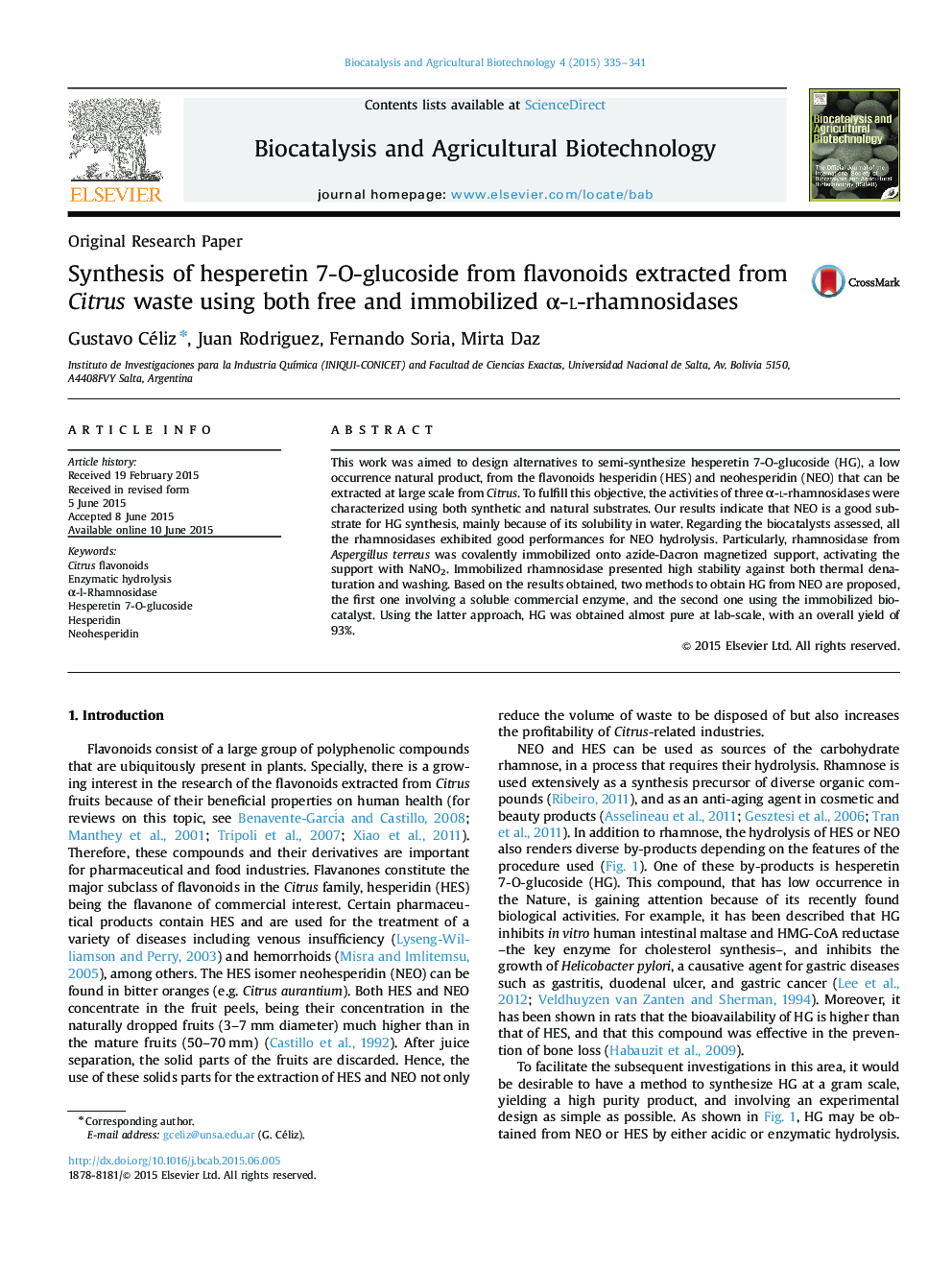| Article ID | Journal | Published Year | Pages | File Type |
|---|---|---|---|---|
| 2075459 | Biocatalysis and Agricultural Biotechnology | 2015 | 7 Pages |
This work was aimed to design alternatives to semi-synthesize hesperetin 7-O-glucoside (HG), a low occurrence natural product, from the flavonoids hesperidin (HES) and neohesperidin (NEO) that can be extracted at large scale from Citrus. To fulfill this objective, the activities of three α-l-rhamnosidases were characterized using both synthetic and natural substrates. Our results indicate that NEO is a good substrate for HG synthesis, mainly because of its solubility in water. Regarding the biocatalysts assessed, all the rhamnosidases exhibited good performances for NEO hydrolysis. Particularly, rhamnosidase from Aspergillus terreus was covalently immobilized onto azide-Dacron magnetized support, activating the support with NaNO2. Immobilized rhamnosidase presented high stability against both thermal denaturation and washing. Based on the results obtained, two methods to obtain HG from NEO are proposed, the first one involving a soluble commercial enzyme, and the second one using the immobilized biocatalyst. Using the latter approach, HG was obtained almost pure at lab-scale, with an overall yield of 93%.
